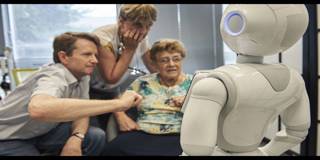OnPoint Subscriber Exclusive
Longer Reads provide in-depth analysis of the ideas and forces shaping politics, economics, international affairs, and more.

Calling Dr. Robot
As in many other economic sectors, artificial-intelligence applications in medicine seem to hold unlimited promise. But to realize AI’s full potential in diagnosis, records management, hospital operations, and other areas of medicine, innovators and regulators alike must heed the lessons of past technological revolutions that failed.
PARIS – Unintended consequences in the field of artificial intelligence (AI) tend to make for lively headlines, such as when Microsoft introduced a Twitter chatbot that quickly began spewing racist slurs. But whether it is a case of Google’s image-recognition algorithm labeling black people as “gorillas” or Tesla’s autonomous vehicles killing their drivers, AI’s controversies have yet to dampen its appeal.